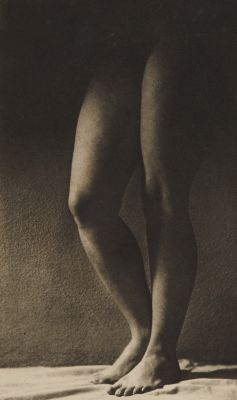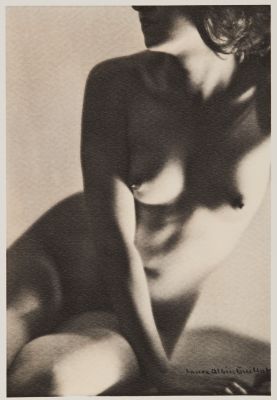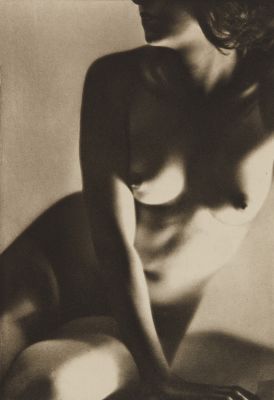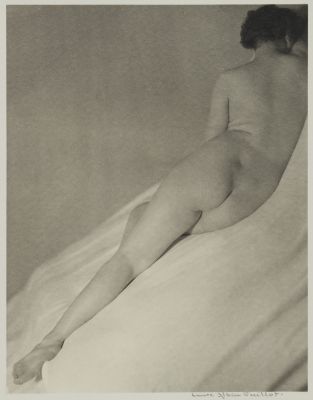
Title
MicrographieArtist
Albin-Guillot, Laure (French, 1892-1962)Date
1932Process
Fresson printAtelier
FressonImage Size
28.2 x 22.5 cmSheet Size
38 x 27.2 cm
Tinted Fresson print, possibly unique.
Reminiscent, consciously or not, of Anna Atkins’ Photographs of British Algae, Albin-Guillot’s work is much closer to later abstraction than to contemporary books like Blossfeldt’s Urformen der Kunst. The prints by Draeger Frères after Albin-Guillot’s photographs are of such things as rhinoceros horn, horse’s hooves, whale’s cartilage and uric acid which when magnified bear no relation to their original forms, transforming rather into shimmering repetitive motifs and textural mosaics. [1]
Albin-Guillot became interested in photography shortly after marrying in 1901. She was central to photographic circles in Paris during the 1920s, at which time she began sending her personal work to photographic salons. Between 1924 and 1937, she exhibited her soft-focus portraits and nudes (both male and female) primarily in Paris, but also in Prague, Barcelona, London, and New York. Her images appeared regularly in Vu, Arts et Métuers Graphiques, and other French periodicals. Among the books she illustrated were Henry de Montherlant’s La Deesse Cypris (1932), Paul Valery’s Le Narcisse (1936), and Pierre Louÿs’s Douze Chansons de Bilitis.
During the 1930s, Albin-Guillot served as the head of the photographic archives of the L’Ecole des Beaux Arts and president of the French Société des Artistes Photographes. In additional to pictorial and micrographic work she produced documentary and fashion photographs. Some of her modernist pictures were included in the important 1951 German exhibition Subjektive Fotograpfie, organized by Otto Steinert and Franz Roh. Laure Albin-Guillot died in Paris on February 22, 1962.
References
[1] Parr Martin and Gerry Badger. 2004. The Photobook : A History. Volume I. London: Phaidon.











